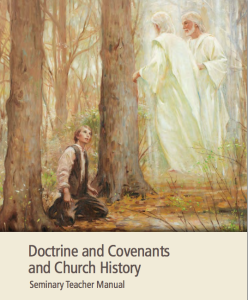[This article first appeared in the Student Review. It has been reposted here with slight alteration.]
In a fireside devotional given at Utah State University in November 2011, Elder Marlin K. Jensen, an emeritus Seventy and former Church Historian and Recorder for The Church of Jesus Christ of Latter-day Saints, included a question and answer segment in his remarks. During this Q&A, one member of the audience asked about the concerning trend of Church members, particularly younger members, leaving the Church over controversial historical issues they encounter online and elsewhere. “Is the Church aware of that problem?” the questioner asked. “What about people who are already leaving in droves?” Jensen’s response to this question has gone viral, having been reported in the press and discussed on a number of blogs and other sites. “The fifteen men that are above me in the hierarchy of the Church . . . really do know. And they really care. And they realize that, maybe, since Kirtland we’ve never had a period of—I’ll call it apostasy—like we’re having right now, largely over these issues.” Jensen then explained that the Church was then in the process of creating resources to address these concerns. “So we are trying to create an offering that will address these issues and be available for the public at large and to people who are losing their faith or have lost it.” [Read more…] about LDS Church Essays Tackle Controversial Issues


